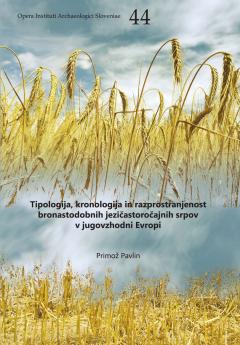Tipologija, kronologija in razprostranjenost bronastodobnih jezičastoročajnih srpov v jugovzhodni Evropi / Typology, chronology, and distribution of Bronze Age tanged sickles in South-Eastern Europe
Of particular interest is the distribution of variants with sickles made according to the same model. Some of them prove contact between communities over long distances, even over more than a thousand kilometres. An interesting idea expressed in the conclusion is that the large hoard finds in the east of the Carpathian Basin, in which sickles are also massively represented, may represent accumulations of wealth from the salt trade. Sickles were therefore not only agricultural tools, but also a pre-monetary means of payment.
Downloads

Series
License

This work is licensed under a Creative Commons Attribution-NonCommercial-ShareAlike 4.0 International License.
